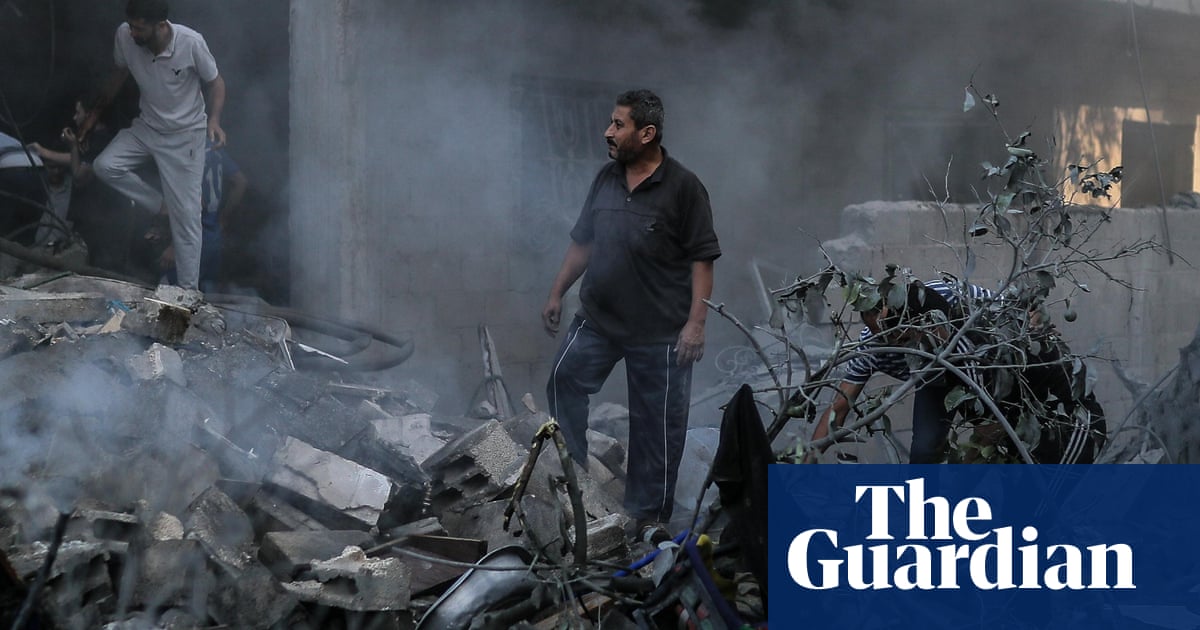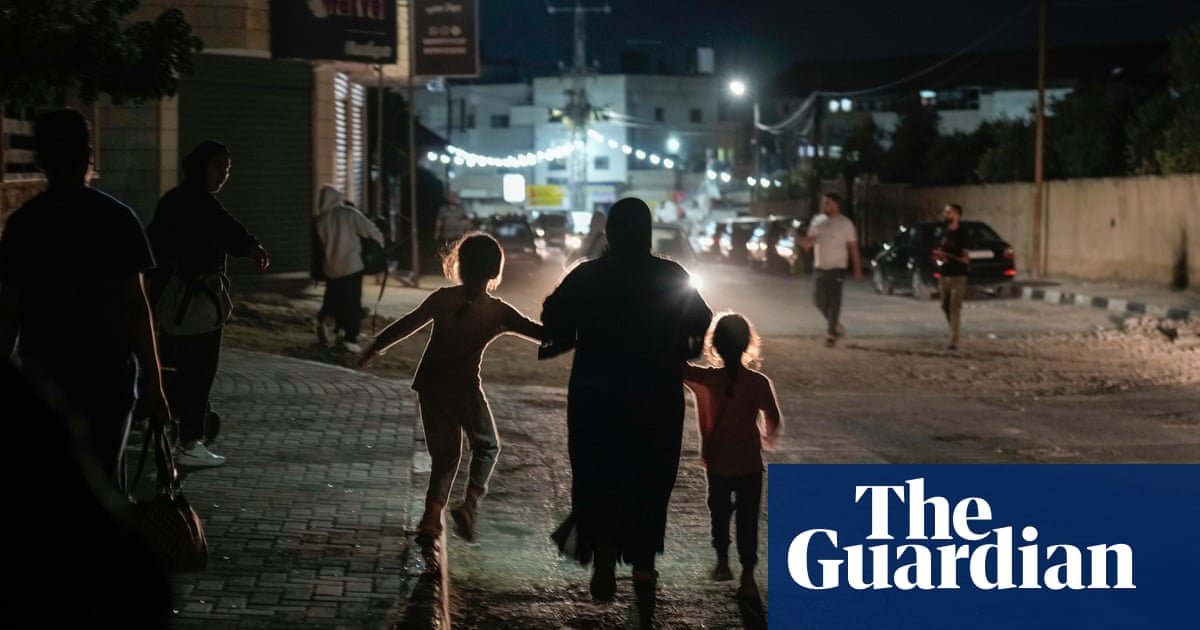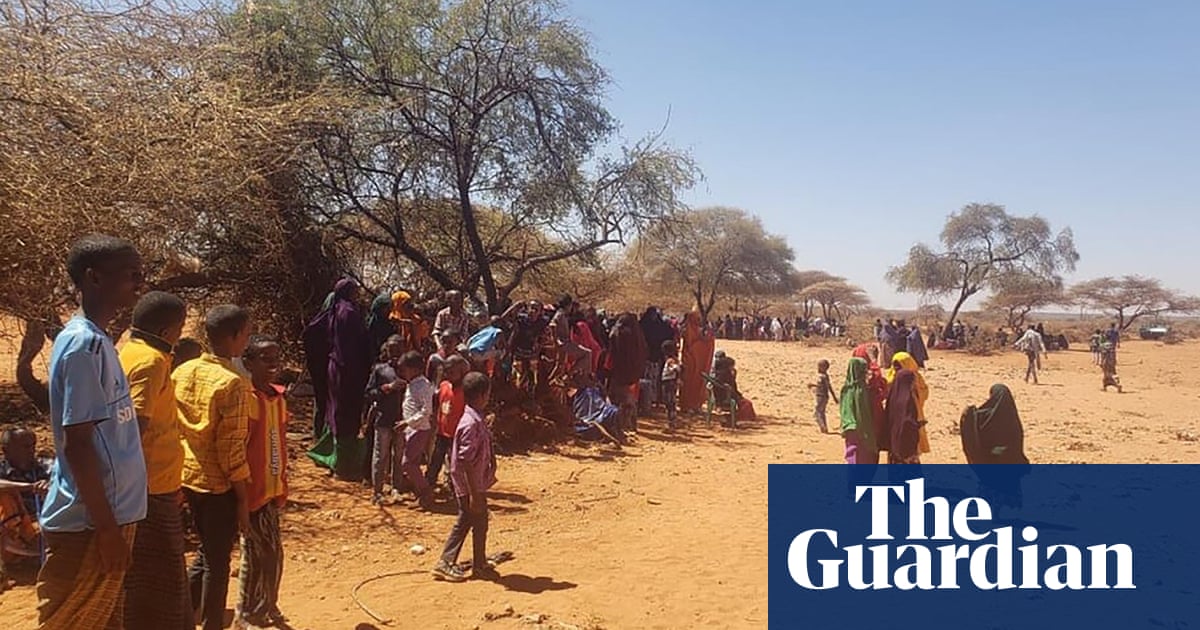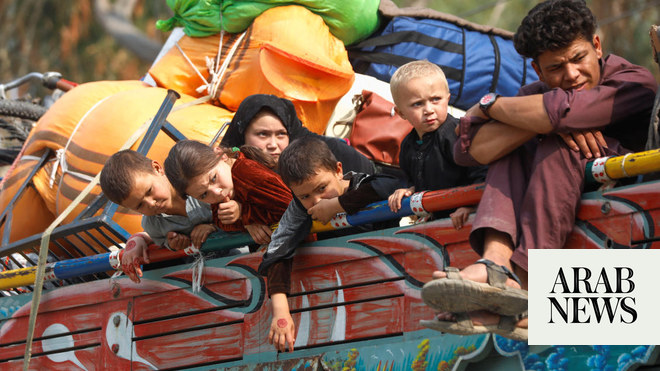
Tens of thousands of Palestinians fled northern Gaza on Saturday, cramming into already crowded schools, homes and makeshift shelters in the south, as Israeli airstrikes pound the besieged strip before an expected ground invasion.
One strike hit a civilian evacuation convoy, killing a reported 70 people including women and children on Friday. They were travelling on a route Israel would declare safe less than an hour later, as it repeated calls for more than a million people to evacuate their homes in Gaza City.
Israel has vowed to obliterate the Hamas militant group after its fighters broke through the hi-tech fence surrounding the strip and went on a murderous rampage, killing 1,300 people, mainly Israeli civilians, and seizing dozens of hostages last weekend.
“The next stage is coming,” the Israeli prime minister, Benjamin Netanyahu, told troops in southern Israel late on Saturday, in a video posted by his office. “We’re all ready.”
About 2.3 million people are trapped in Gaza, facing a terrifying escalation of bloodshed and misery if fighting intensifies.
Israel has sealed all crossings into its territory and Egypt reinforced its border crossing, saying it would not allow refugees to enter.
Foreign citizens were briefly offered hope they might be allowed to leave the enclave before fighting starts under a deal agreed by Egypt, Israel and the United States. But the crossing to Egypt had not opened to anyone by the evening.
Food, fuel and water supplies were dwindling fast on Saturday after Israel cut all movement in and out of Gaza. Philippe Lazzarini, commissioner general for the UN Relief and Works Agency (Unrwa), said that the enclave was running out of water because of a lack of fuel to run its treatment system.
“It has become a matter of life and death. It is a must – fuel needs to be delivered now into Gaza to make water available for 2 million people,” Lazzarini said.
The death toll from airstrikes, already at unprecedented levels, had reached more than 2,200. That included 724 children and 458 women, the Gaza health ministry said.
Medics are struggling to cope. “The hospital is overwhelmed with internally displaced families,” said Dr Ghassan Abu-Sittah, a surgeon at Shifa hospital in Gaza City. “There are people sleeping on the floors everywhere, even inside the hospital. The crowding is going to lead to an infectious disease outbreak.”
“The doctors have brought their families into the hospital for safety. I slept on an operating room table last night. One of our plastic surgery trainees at Shifa was killed last night with 30 members of his direct family.”
Amid mounting fears of a communications blackout as Palestinians across Gaza found themselves increasingly without power or access to phone networks, he added: “Internet is impossible.”
The UN has appealed to Israel to rescind its evacuation order. The secretary general, António Guterres, said the mass movement of so many people across an active war zone “is extremely dangerous – and in some cases, simply not possible”.
Many residents cannot find transport, or cannot travel because they are old, sick, disabled, caring for someone with limited mobility or fear they have nowhere to go. Gaza was already one of the world’s most densely populated places, when its residents were spread across the full 365 sq km.
Israel’s faith in its army and intelligence services has been shaken by the attack, and although there is popular support for some form of military action against Hamas, there is also a great deal of anger against the government.
Idit Silman, a Likud politician and member of Netanyahu’s cabinet, was recently chased out of a hospital after healthcare workers and members of the public shouted: “You ruined this country … get out of here.”
On Saturday protesters gathered in central Tel Aviv to demonstrate against the government’s handling of the crisis and the lack of information about the dead and the dozens of missing, who are believed to be being held hostage in Gaza. They chanted “Bibi to jail”, using a nickname for Netanyahu.
“I came here because I want my daughter back and I am not going to move from here … until they bring her back,” said Shira Albag, 52, whose daughter Liri Albag was in an army base attacked by Hamas. She appeared in a hostage video in her pyjamas, Shira said.
Israel’s military has said it is preparing for a long campaign in Gaza, where Hamas has been preparing defences, including networks of tunnels, for years.
About 360,000 reservists have been mobilised, the largest number in its history, convoys of tanks have gathered near the border, and some troops made initial ground operations in Gaza on Friday.
Tank-backed forces had mounted raids to hit Palestinian rocket crews and gather information on the location of hostages, a military spokesperson said. The IDF also claimed to have killed the head of Hamas’ air operations, Murad Abu Murad.
But Israel has not detailed its aims for the operation, beyond the destruction of Hamas. Asked on Saturday what an Israeli military victory may look like, an IDF spokesperson, Lt Col Richard Hecht, said: “That is a big question. I don’t think I have the capability right now to answer that.”
Palestinians and some regional officials have said they fear Israel’s ultimate aim is not only to destroy Hamas, but to push Palestinian people out of Gaza. This would mirror the Nakba, the Arabic term for the forcible expulsion of about 750,000 Palestinians from what was previously British mandate-controlled Palestine during the creation of Israel in 1948.
King Abdullah of Jordan, which is next to the occupied West Bank, has warned “against any attempt to forcibly displace Palestinians from all Palestinian territories or cause their internal displacement”.
The head of the 22-member Arab League, Ahmed Aboul Gheit, urgently appealed to Guterres to condemn “this insane Israeli effort to transfer the population”.
Hamas has called Israel’s evacuation order propaganda, and mosques in Gaza City blared messages urging residents to stay, Reuters reported. “Hold on to your homes. Hold on to your land,” one broadcast, as tens of thousands headed south.
Israel’s ambassador to the UN, Gilad Erdan, said the evacuation warning was “to temporarily move [people] south … to mitigate civilian harm”, adding that the UN should be “praising Israel for these precautionary actions”.
Some in Gaza City said they were refusing to leave, such as Mahmoud Shalabi, who is coordinating an emergency medical response with the group Medical Aid for Palestinians.
“I’m lucky that I have a generator and I can pump water from my water tanks,” he said, the sound of his children in the background as he spoke.
“This morning I went outside to buy bread for my family. All the bakeries are now closed, but even with the ones that are closed there are plenty of people waiting outside them, as though there’s a tiny sliver of hope that they’ll reopen. In addition, I went to try and go to the bank to get cash, and found it was partly destroyed by a bombardment that happened just in front of it.”
He added: “Last night was horrific. Bombardments were happening everywhere. The air was filled with gunpowder, we were breathing it heavily.”
Hostilities have been spreading, including to Israel’s northern border with Lebanon. Israeli forces said early on Saturday that they had “struck a Hezbollah terror target in southern Lebanon” in response to a drone crossing the border.
The Reuters journalist Issam Abdallah was killed on Friday while working in southern Lebanon, after missiles were fired from the direction of Israel, according to another Reuters videographer on the scene. Six other journalists were injured.
The Lebanese prime minister, Najib Mikati, and a Hezbollah lawmaker blamed the incident on Israel. Israel’s UN envoy said it would investigate what had happened in the area after the journalist’s death. “We always try to mitigate and avoid civilian casualties,” Erdan said.
Fierce clashes between Palestinians and Israeli settlers and army personnel also broke out around occupied East Jerusalem and the West Bank on Friday, killing at least 16 people.










